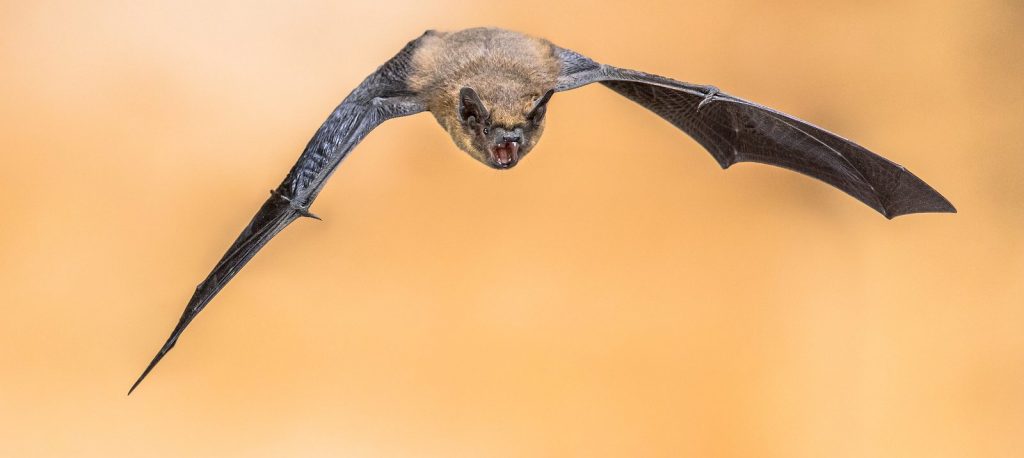By now, you are well-informed that bats are not blind. In fact, they see quite well. Their echolocating abilities are more than just a visual guide; they are a biological instrument that provides an advantage in many areas of Microchiroptera bat life. Here in this blog, you will learn the fundamental facts surrounding echolocation and bats, including which bats are not equipped with natural echolocating abilities.

What is Echolocation?
Dictionary.com defines echolocation as, “the general method of locating objects by determining the time for an echo to return and the direction from which it returns, as by radar or sonar.” But in terms of animals, like bats, they better define it as, “the sonar-like system used by (…) animals to detect and locate objects by emitting usually high-pitched sounds that reflect off the object and return to the animal’s ears or other sensory receptors.”
In plain language, echolocation is like sonar, in that you let out a sound wave, wait for the sound wave to come back to you, and then use that data to define an environmental guide for whatever application you need.
Bats are not the only animals who use echolocation; dolphins and whales are well-known echolocating species, as well as, some birds and species of shrew, and possibly even hedgehogs, are suspected of using the same type of biological gift. For these animals, the primary purposes of echolocation are coordination and direction, evading obstacles, hunting or obtaining food, and interacting socially.
How Does it Work?
Although it is not yet fully understood by the scientific community how echolocation in bats works, but we do have a basic theory. Scientists and researchers have ultimately determined that bats have built-in vocal chords that vibrate when they move air past them.
They emit these extremely high-pitched sounds from their mouths (or sometimes noses) as they fly, which in turn, travel through the air as a sound wave. These traveling sound waves have energy that bounces off anything it comes into contact with.
After emitting these extremely high-pitched sound waves, bats listen carefully for their return, and use the time data to configure their surroundings more precisely. They use this to dart and dive for flying insects, better navigate obstructions, and more.
Dealing With Nuisance Bats?
Although bats are an important part of our Eco-system, and even our economy, they can sometimes pose certain threats if their colonies get too close. If you suspect you have issues with bats, or a bat infestation in the attic or other area of your home, contact our DNR licensed and insured professionals at 553-502-7622 for safe and humane bat control service in Louisville, Kentucky and its surrounding counties. We have more than two decades of experience working with bats, and offer both residential and commercial bat removal and control services, including minor attic restorations for bat damages. Request a free estimate, today.

